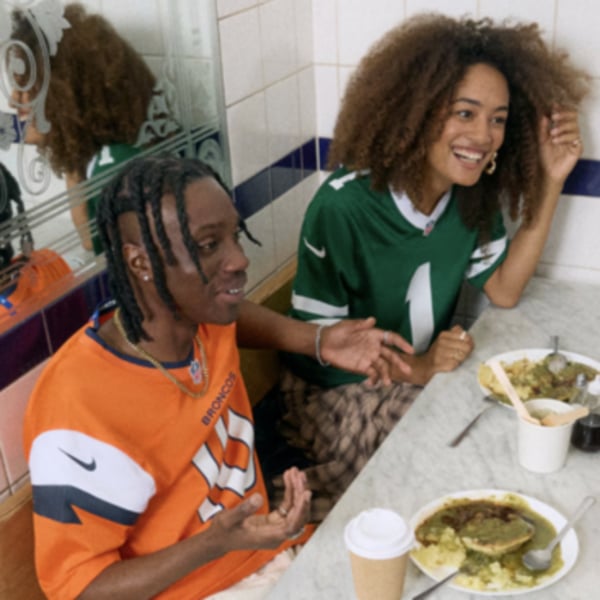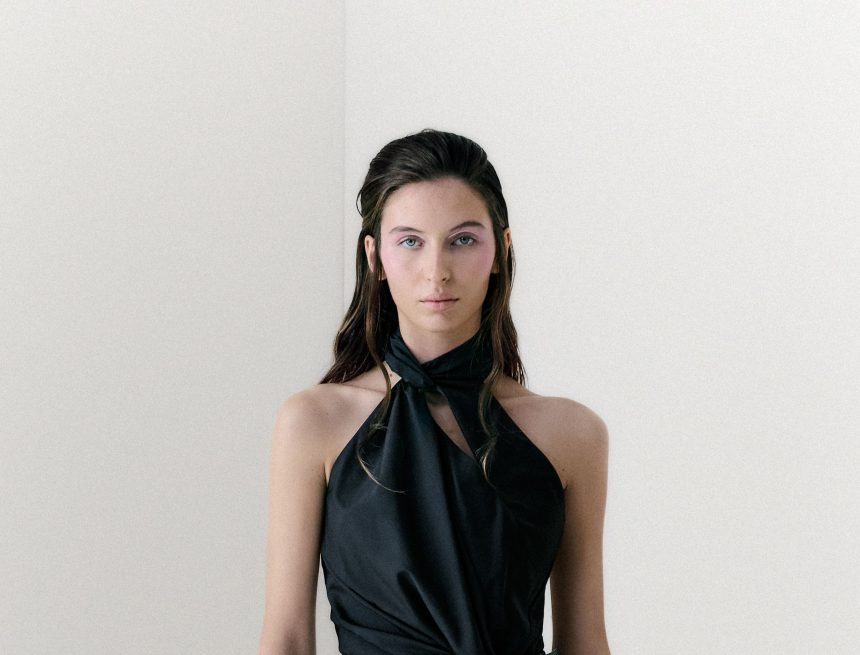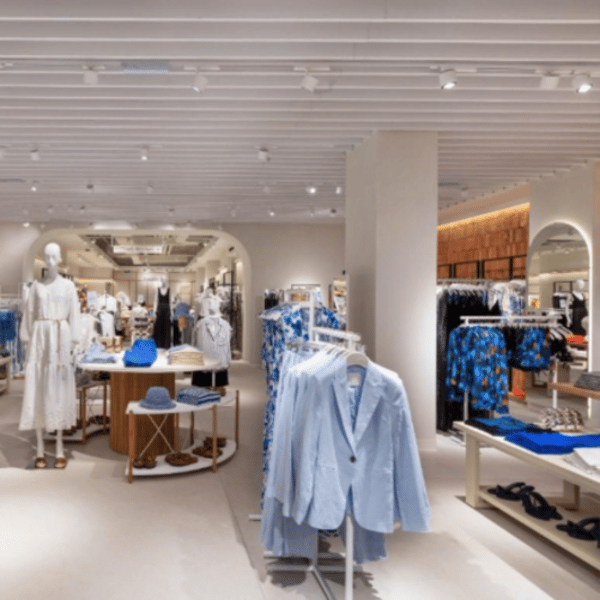Models strode down a violet-hued Sephora-branded runway in leather skirts, trench coats and dangling body jewellery, wearing pieces by an eclectic mix of designers including Retired from Society, AuthMade and Kids of Immigrants.
It wasn’t fashion week, and the show was taking place in San Francisco, rather than New York, Milan or Paris. But the Golden State Valkyries, the WNBA’s newest team, were staging their inaugural fashion show.
The event, held in August, was an especially over-the-top example of a fast-growing trend: teams, leagues, and athletes eager to stake a claim at the white-hot intersection of fashion and sports. Recent league-wide tie-ups include Breitling, Abercrombie & Fitch, Veronica Beard, and Crocs with the NFL; Puma with Formula One; the WNBA with Fenty, OVO, and Mielle. There are new deals between individual teams and athletes announced almost daily.
Sports and fashion have a lot to gain from branching out beyond sportswear brands like Nike and Adidas. Sports teams and leagues are capitalising on fan interest in new ways with merch and special collections. Fashion brands are tying themselves to one of the last remaining examples of mass-appeal culture. According to a report from PwC, the sports sponsorship marketplace reached $115 billion in 2025, and is projected to grow beyond $160 billion by 2030.
The return on that investment isn’t always obvious. Launch-day hype for a collaboration doesn’t always translate into sales. Nearly a year before the Breitling and Abercrombie & Fitch deals, Veronica Beard released blazers featuring NFL team logos; a few, including the New York Jets and Los Angeles Rams editions, are still available on the brand’s site at nearly 80 percent off.
Too many odd pairings between brands and leagues risk eroding credibility for both sides. There’s also the inevitable diminishing returns: fans are excited by the first Premier League team to announce an official fashion partner; less so the seventh. Just check the comments on this Instagram post about Chelsea’s collaboration with Drake’s OvO label.
“There is just so much happening. It’s noise now,” said Matt Powell, a senior advisor at BCE Consulting. “How does somebody stand out in this crowded field?”
Most fashion brands and sports organisations will say that revenue is rarely the sole goal of any partnership – the aim is to create a marketing halo and engagement. Merchandise sales are just one metric – ticket sales, Instagram followers, waitlist sign-ups and cultural cachet all contribute to the ultimate goal: boosting visibility and engagement.
“It’s cultural impact,” NFL style editor Kyle Smith said in an interview at an event for House of Hellmann’s, a collection released in September by the condiments brand featuring New York Giants linebacker Kayvon Thibodeaux. “I just want to make sure everyone feels included and welcome in anything that has to do with sports.”
In other words, even those Veronica Beard blazers had plenty of upside.
“We love the product. We love what we did together, love the simplicity of it,” said Tracie Rodburg, senior vice president of sponsorships for the NFL. “But there’s always ways to learn more about the operational side of it and how to get that right.”
Fit Matters
The first step in yielding any kind of reward from a collaboration is making sure the actual matchup is a fit.
A full year before the Valkyries stepped foot on the court for their first game this past May, the team had already sold merchandise in its signature violet colour in 70 countries and all 50 states, said president Jess Smith. The Valkyries’ star shooting guard, Tiffany Hayes, is also an aspiring fashion designer, and the team’s San Francisco stomping grounds has a big fashion industry presence with brands like Gap, Levi’s, Everlane and Rothy’s headquartered there.
“Our fans, without seeing the on-court products, immediately felt connected to our values and [were] reflecting their fandom through what they were wearing,” Smith said.
The women’s sports space has seen massive growth over the past few years. The league’s teams and individual players have used fashion partnerships and business deals to give a further boost to their individual profiles. Like the Valkyries, the New York Liberty have used fashion as a fulcrum for visibility. The team’s star guard, Sabrina Ionescu, is one of Nike’s headlining signature athletes and one of the most popular players in the league.
“The other thing that’s evolved over time, specifically with social media … is the individual athlete has a lot of power and influence,” Smith said. “One of the growth pieces of women’s sports is that the athletes build their own likeness … through opportunities off the court.”
Warby Parker recently launched a partnership with University of Texas quarterback Arch Manning. The deal includes the introduction of a new eyewear collection with the QB as the centerpiece. He’ll also be introducing local initiatives in Austin, Texas as part of Warby Parker’s Pupils Project — a school-based vision program.
A partnership between a premium eyewear brand and a college athlete might seem unusual, but Warby Parker co-CEO Neil Blumenthal calls it a perfect fit. The company’s focus on scholastic values made teaming up with Manning as an NCAA athlete a natural choice — and as a longtime Warby Parker wearer, he already understands the brand, giving the partnership a stronger chance of long-term success.
“One of the things we think about, there’s the authenticity component, the storytelling component,” Blumenthal said. “That’s just a tactical challenge with our category and working with athletes, broadly.”
What Success Looks Like
Often, fashion and sports collaborations are viewed through a cultural lens, like Smith is describing. That can matter as much – if not more – than the direct sales that result from a partnership.
The NFL’s Abercrombie and Breitling partnerships both grew out of more limited licensing deals. The NFL sees Abercrombie as a proven staple within the fashion sector that would give the league credibility with younger fans through the branded products they’d create together. Separately, for the Breitling deal, the league sees its partnership with the Swiss watchmaker as part of a years-long effort to expand the game to international audiences.
“It’s the potential revenue that we’re going to drive together, but it’s also how we’re aligned,” Rodburg said.
Warby Parker will measure the effectiveness of its partnership with Manning in several ways, Blumenthal said, ranging from determining how fans are learning about the company to assessing whether foot traffic in Warby Parker’s stores is increasing as a result.
“Increasing brand awareness is one of our main goals with the partnership,” Blumenthal said. “If we think about Arch’s community and fanbase – that spans quite a wide audience and wide range of age demographics. Local fans, national football fans, college students in general, Gen Z.”
The sort of partnerships being tried are at a scale rarely seen before, and both the fashion and sports worlds are still figuring out what a good collaboration looks like. Plenty of these deals will vanish without making an impact, and keep clearance racks well stocked.
But it would be a bigger mistake not to try.
“Sport has become so ubiquitous in our society. It really is our primary form of entertainment today,” he said. “I’m surprised that they really didn’t jump on this sooner.”


